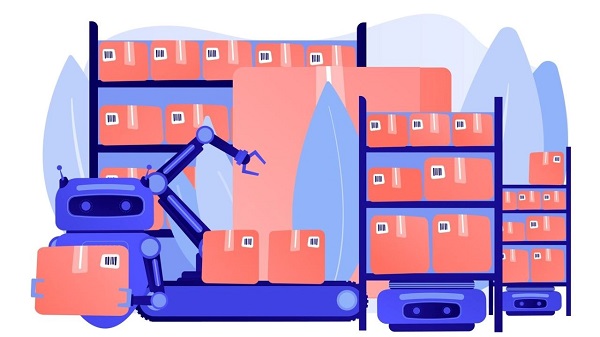Mistakes to Avoid While Choosing Supply Chain Automation Tools
4 min read
Do you know supply Chain automation tools promise to make business operations smoother and more profitable? If yes, then you may know the importance of selecting the right tool can be daunting.
Before making any choice, it’s essential to understand your business needs and how the tool can help. Many businesses make common mistakes by not defining their requirements, not checking the compatibility with existing systems, and ignoring the ability to adapt as the business grows.
It is also important to consider training and support for your employees and team, as well as the latest technology trends.
If you’re just starting out in business and want to avoid these mistakes, we’re here to help you understand what to watch out for when picking a supply chain automation tool that fits your needs.
Here, we’ll explain common errors to avoid so you can make a wise choice:
Mistakes to Avoid
● Neglecting to Define Your Needs:
One of the most common mistakes businesses make is failing to clearly define their needs and objectives before selecting an automation tool. It’s crucial to assess your current processes, identify pain points, and determine the specific areas where automation can add the most value. Without a clear understanding of your requirements, you risk investing in a solution that doesn’t address your unique challenges.
● Overlooking Integration Capabilities:
Effective supply chain management automation requires seamless integration between different systems and processes. When evaluating automation tools, it’s essential to consider their compatibility with your existing infrastructure. Look for solutions that offer robust integration capabilities, allowing you to connect with your ERP, inventory management system, and other essential software tools. Failure to prioritize integration can result in disjointed operations and data silos.
● Ignoring Scalability:
Your supply chain automation needs will inevitably change as your business grows and evolves. Choosing a solution that can scale with your business is essential, accommodating increasing transaction volumes, expanding product lines, and evolving customer demands. Avoid investing in rigid, inflexible tools that cannot adapt to your changing needs. Instead, opt for scalable automation platforms that can grow alongside your business.
● Focusing Solely on Cost:
While cost is undoubtedly essential when selecting an automation tool, focusing solely on price can be shortsighted. A low-cost solution may seem attractive upfront but could lack essential features and functionality, ultimately costing you more in the long run. Instead of fixing prices, consider the value the automation tool can deliver to your business. Look for a solution that offers a strong return on investment through improved efficiency, reduced errors, and increased profitability.
Also Read: Reducing Training Administration Time: The Power of Automation
● Underestimating Training and Support Needs:
Implementing a new AI supply chain automation tool requires training your employees to use the system effectively. Failure to invest in comprehensive training and support can lead to resistance from your workforce and hinder adoption. Before selecting a tool, consider the level of training and support the vendor provides. Look for vendors that offer robust training programs, ongoing support, and resources to help your team maximize the value of the automation tool.
● Neglecting Future Trends and Technologies:
The field of supply chain management is constantly evolving, with new technologies and trends emerging regularly. When selecting an automation tool, it’s essential to consider future trends and technologies that could impact your business. Look for solutions built on modern architecture and adaptable to future innovations such as artificial intelligence, machine learning, and predictive analytics. By staying ahead of the curve, you can future-proof your supply chain operations and maintain a competitive edge in the market.
● Disregarding Customization Options:
Every business has unique processes and requirements, and a one-size-fits-all approach to automation may not be suitable. Choosing a solution that offers customization options is essential, allowing you to tailor the system to meet your specific needs. Look for tools that enable the configuration of workflows, rules, and user interfaces to seamlessly align with your business processes. By leveraging customization options, you can optimize the effectiveness of the automation tool and ensure it aligns closely with your operations.
● Forgetting About User Experience:
The usability of the automation tool is crucial for its adoption and success within your organization. Neglecting to consider the user experience can result in frustration among employees and resistance to using the system. When evaluating automation tools, prioritize solutions with intuitive interfaces, straightforward navigation, and user-friendly features. Conduct usability testing or gather feedback from potential users to ensure the tool meets their needs and preferences. Investing in a tool with a positive user experience can enhance employee satisfaction, productivity, and overall effectiveness of the automation initiative.
● Overlooking Security and Compliance:
Supply chain operations involve sensitive data and transactions, making security and compliance paramount concerns. When selecting an automation tool, it’s essential to prioritize security features and ensure compliance with relevant regulations and industry standards. Look for tools that offer robust data encryption, access controls, audit trails, and compliance certifications. Additionally, consider the vendor’s data security track record and commitment to ongoing compliance updates and improvements. By prioritizing security and compliance, you can protect your organization’s data, mitigate risks, and maintain trust with customers and partners.
Also Read: Master Automation Testing In Bangalore With Our Specialized Course
Conclusion
Choosing suitable supply chain automation tools is critical for driving efficiency, reducing costs, and maintaining competitiveness. By avoiding these common mistakes and taking a strategic approach to selection, businesses can unlock the full potential of automation and achieve lasting success in today’s rapidly changing business landscape.







